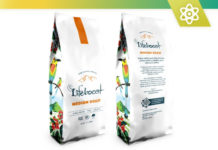Maintaining stable blood glucose levels is crucial for everyone, not just those with diabetes. Blood sugar swings can affect mood, energy levels, and long-term health. Understanding how to manage and stabilize blood sugar through diet, exercise, and lifestyle changes can significantly improve overall well-being. This comprehensive guide delves into the intricacies of blood sugar control, providing actionable strategies and insights.
Understanding Blood Sugar and Its Importance
Blood sugar, or glucose, is the primary energy source for the body’s cells. It comes from the foods we consume, mainly carbohydrates. When you eat, your digestive system breaks down these carbohydrates into glucose, which enters your bloodstream. The hormone insulin, produced by the pancreas, helps cells absorb this glucose to be used for energy or stored for later use.
Maintaining balanced blood sugar levels prevents hyperglycemia (high blood sugar) and hypoglycemia (low blood sugar). Chronic hyperglycemia can lead to serious health problems such as cardiovascular disease, nerve damage, kidney disease, and vision issues. Conversely, hypoglycemia can cause symptoms like dizziness, confusion, and, in severe cases, unconsciousness.
Diet Strategies for Blood Sugar Control
One of the most effective ways to manage blood sugar is through diet. Here are some critical dietary strategies:
1. Balance Your Macronutrients: Incorporating a balanced proportion of macronutrients—carbohydrates, proteins, and fats—can help manage blood sugar levels. High-starch foods, similar to sugary foods, can cause a rapid increase in blood glucose. To mitigate this, pair high-carbohydrate foods with proteins and healthy fats, which slow glucose absorption into the bloodstream. For example, pair rice with a protein source like chicken to balance the net carbs and protein grams.
2. Choose Low-Glycemic Index Foods: The glycemic index (GI) measures how quickly a food raises blood glucose levels. Foods with a low GI are digested and absorbed more slowly, gradually increasing blood sugar. Opt for legumes, whole grains, nuts, and non-starchy vegetables. These foods help stabilize blood sugar and provide essential nutrients and fiber.
3. Eat Smaller, More Frequent Meals: Instead of having three large meals, try eating five smaller meals throughout the day. This approach helps maintain more stable blood glucose levels by providing a steady energy supply and preventing the extremes of highs and lows associated with less frequent, larger meals.
4. Start Your Day Savory: Beginning your day with a savory breakfast rather than a sugary one can set a stable tone for your blood sugar levels. A breakfast rich in proteins and healthy fats, such as eggs with avocado, can prevent a glucose spike and provide sustained energy.
5. Be Mindful of Carbohydrate Timing: Consuming carbohydrates strategically can also help. For instance, eating carbs after a meal rather than on an empty stomach can reduce the glucose spike. When paired with proteins, fats, and fiber, your body can gradually process these carbohydrates.
Importance of Physical Activity
Physical activity plays a pivotal role in regulating blood sugar levels. Here’s how incorporating regular exercise can help:
1. Enhanced Insulin Sensitivity: Regular physical activity increases insulin sensitivity, which means your muscles can more effectively use available insulin to absorb glucose during and after exercise. This is particularly beneficial for those with insulin resistance or type 2 diabetes.
2. Immediate Glucose Uptake by Muscles: Engaging in moderate activity after meals can significantly reduce postprandial glucose levels. Walking, doing household chores, or light aerobic exercises for at least 10 to 30 minutes can prevent blood sugar spikes by encouraging muscles to utilize glucose for energy.
3. Long-term Benefits: Consistency in maintaining an active lifestyle brings long-term benefits. Aerobic exercises like jogging, swimming, or cycling, combined with resistance training, can contribute to overall metabolic health and better blood sugar management. A meta-analysis supports the importance of post-meal physical activity in lowering glucose levels.
Hydration and Sleep: Their Essential Roles
While diet and exercise are often highlighted, hydration and adequate sleep are equally vital in maintaining stable blood sugar levels.
1. Stay Hydrated: Dehydration can trigger glucose retention in the bloodstream. Drinking sufficient water helps your kidneys flush out excess glucose through urine. It's essential to choose water over sugary drinks or even natural fruit juices, as these can cause a rapid increase in blood glucose levels.
2. Quality Sleep: Sleep is a critical, often overlooked aspect of blood sugar management. Lack of sleep can increase cortisol levels, a stress hormone that can elevate blood sugar. Insufficient sleep can also enhance insulin resistance, making it harder for your body to regulate glucose. Aiming for 7-8 hours of quality sleep per night can significantly affect blood sugar stability. The Desoto Family Care Clinic says adequate sleep can reduce insulin resistance and improve glucose levels.
Stress Management
Stress has a profound impact on blood sugar levels. When stressed, the body releases hormones like cortisol and adrenaline, which can increase blood glucose. Managing stress effectively can, therefore, aid in better blood sugar control.
1. Mindfulness and Relaxation Techniques: Meditation, deep breathing exercises, and yoga can help reduce stress levels. These techniques promote relaxation and have been shown to lower blood sugar levels over time.
2. Physical Activity: Exercise is also a powerful stress reliever. Beyond its direct benefits on blood sugar, physical activity boosts endorphins, improving mood and reducing stress-related glucose spikes.
3. Adequate Rest: Ensuring time to relax and unwind is essential for stress management. Simple activities like reading a book, spending time in nature, or engaging in hobbies can provide a mental break and reduce stress.
Monitoring and Medications
For those with diabetes or those who experience significant blood sugar fluctuations, regular monitoring and medications may be necessary.
1. Continuous Glucose Monitoring (CGM): A CGM device can provide real-time insights into blood glucose levels throughout the day, allowing for more precise adjustments in diet, exercise, and medication.
2. Medications: For some, managing blood sugar requires medication. Insulin therapy, oral medications, and other diabetes treatments can be crucial in maintaining target blood glucose levels. Working closely with healthcare providers is important to determine the best treatment plan.
3. Regular Check-ups: Regular visits to healthcare professionals to monitor blood glucose levels, HbA1c (a measure of average blood glucose over three months), and overall health are essential in managing long-term glucose control.
Practical Tips and Daily Habits
Incorporating healthy habits into your daily routine can significantly impact blood sugar stability. Here are some practical tips:
1. Plan Meals: Planning meals and snacks can prevent spur-of-the-moment eating decisions that could spike blood glucose. Look at menus online before dining out and plan your meal selections to align with your blood sugar management goals.
2. Carry Healthy Snacks: Having healthy snacks on hand—like nuts, seeds, or low-GI fruits—can prevent blood sugar dips and make it easier to avoid unhealthy choices while on the go.
3. Mind Your Portions: Portion control is vital. Using smaller plates, measuring servings, and being mindful of portion sizes can help control calorie intake and keep blood sugar levels in check.
4. Stay Consistent: Aim to eat meals and snacks at regular intervals each day. Consistency helps your body anticipate food intake and manage glucose levels more effectively.
5. Educate Yourself: Understanding how different foods affect your blood sugar and learning to read food labels can empower you to make better choices. For instance, knowing how to calculate net carbs and total starches, as Mass General Brigham explained, can help make more informed dietary decisions.
Conclusion
Managing blood sugar levels involves a combination of balanced nutrition, regular physical activity, adequate hydration, quality sleep, and effective stress management. Adopting these strategies and incorporating them into daily routines can achieve stable blood glucose levels, enhancing overall health and well-being. Remember, small, consistent changes can make a significant difference over time. Stay informed, stay proactive, and embrace a lifestyle that supports stable blood sugar and a healthier you.













![Bowflex Max Total: 2024 Fitness Workout Exercise Machine [Review] Bowflex Max Total: 2020 Equipment Review For Complete Upper and Lower Body Workout](https://www.advancedliving.com/wp-content/uploads/2019/12/Bowflex-Max-Total-218x150.jpg)


